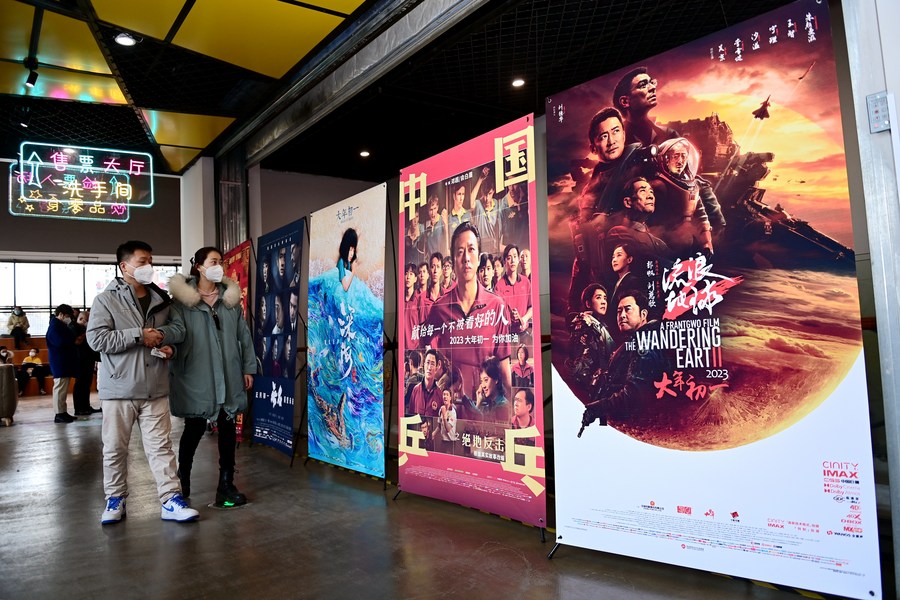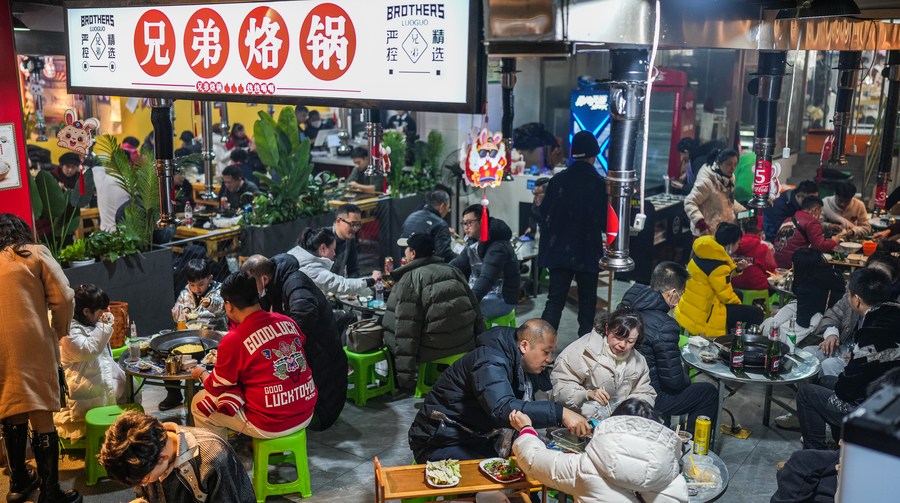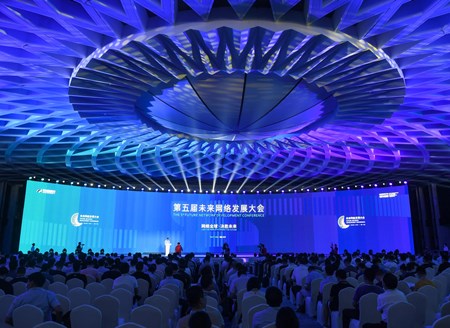*Tourism reservations for this year's Spring Festival holiday skyrocketed by 4 times from the same period last year, with the number of both domestic and outbound trips hitting new highs over the past three years.
*Orders of multi-person dining packages in China's restaurants in the first six days of this holiday rose 53 percent from the same holiday period of 2022.
*The per capita consumption expenditure in China is expected to grow 8 to 12 percent from a year ago in 2023, while total retail sales of consumer goods will expand 7 to 11 percent year on year.
BEIJING, Jan. 28 (Xinhua) -- China has basked in a festive hustle and bustle as people celebrated the lunar new year of the rabbit with strong consumer sentiments.
During the week-long holiday, which ended on Friday, sales revenue of China's consumption-related sectors rose 12.2 percent from last year's Spring Festival holiday, which ran from Jan. 31 to Feb. 6, data from the State Taxation Administration showed.
The figure saw an average annual growth of 12.4 percent compared with the Spring Festival holiday in 2019, the pre-COVID-19 period, according to the data.
Many people returned to their hometowns for family reunions during the first Spring Festival holiday after the country optimized its anti-virus response, while others took long-awaited trips for leisure. During the holiday, people also swarmed into cinemas, restaurants, and different types of tourist attractions, satisfying their pent-up consuming desire.

This photo taken on Jan. 23, 2023 shows people at a cinema in Xi'an, northwest China's Shaanxi Province. (Xinhua/Li Yibo)
MOVIEGOERS ARE BACK
China's cinemas welcomed crowds of moviegoers with a cluster of highly anticipated blockbusters on offer during this year's Spring Festival holiday. In the period, 129 million tickets were sold, generating a whopping revenue of 6.76 billion yuan (about 998.49 million U.S. dollars), up 11.89 percent from the same period of 2022.
The earnings made this year's holiday the second highest-grossing to date, sending a strong signal of the robust recovery of China's cultural and tourism industry this spring.
Rao Shuguang, president of the China Film Critics Association, said the movie frenzy made him feel that Chinese films will be off to "a new start towards a better future" after being hampered by COVID-19 for years.

In this aerial photo, tourists visit the Ice-Snow World theme park in Harbin, northeast China's Heilongjiang Province, Jan. 25, 2023. (Xinhua/Wang Jianwei)
TRAVELERS HIT THE ROAD
Like the zeal for movies, demands for leisure travel logged explosive growth in the week-long holiday. Some 308 million domestic trips were made in the period, up 23.1 percent from the Spring Festival holiday last year and recovering to 88.6 percent of the same holiday in 2019, according to calculation by the Ministry of Culture and Tourism.
The revenue of domestic tourism hit 375.8 billion yuan, up 30 percent from the same period last year and resuming to 73.1 percent of 2019.
Data from online travel agency Trip.com Group showed that tourism reservations for this year's Spring Festival holiday skyrocketed by 4 times from the holiday period last year, with the number of both domestic and outbound trips hitting new highs over the past three years.
Compared with the week-long holiday last year, sales of tickets for major domestic tourist attractions more than quadrupled, according to Trip.com. Orders of domestic air tickets and train tickets rose 40 percent and 80 percent, respectively, and bookings for international air tickets soared more than 4 times, data from Alibaba's travel branch Fliggy showed.
Searches for "hotel reservations" on the Alipay platform surged 6 times this year compared with the holiday last year, and related consumption rose 80 percent. During the first four days of the holiday, bookings for domestic hotels exceeded that in the Spring Festival holiday of 2019, data from Fliggy showed.
Specifically, the number of long-distance tours logged steady growth during this year's holiday, with reservations for long-distance domestic trips jumping over 500 percent, according to Fliggy.
Average travel distance per person has also increased by 400 kilometers compared with last year, data from the online travel service provider Qunar showed. The significant increase of long-distance tourists boosted China's tourist market during this holiday, said Guo Lechun, vice president of the big data research institute of the company.
"The popularity of the Spring Festival tourism is obvious to all," said Shen Jiani, a senior researcher with the Ctrip Research Institute, "Taking this as a starting point, we believe that the confidence and potential of China's tourism consumption will be released rapidly, and the market is expected to embrace a considerable recovery this year."

People enjoy local food in Nanming District of Guiyang, southwest China's Guizhou Province, Jan. 23, 2023. (Xinhua/Tao Liang)
LONG QUEUES OUTSIDE RESTAURANTS
Catering business in China also embraced steady rebound in the week-long holiday, triggered by people's mounting enthusiasm for traveling and family reunions.
Searches for restaurants serving the feast on the Spring Festival eve, one highlight occasion featuring a family gathering and sumptuous dishes, soared over 157 percent compared with last year, according to Dianping, the Chinese version of Yelp.
"I didn't go home during the festival in past years," said Nana, who works in Beijing. This year, she made a reservation at a restaurant in her hometown as early as one month before the holiday. "I'd like to dine out with my family on the Spring Festival eve to well celebrate the new year."
According to China's e-commerce platform Meituan, orders of multi-person dining packages in China's restaurants in the first six days of this holiday rose 53 percent from the same holiday period of 2022.
Throughout the week-long holiday, hordes of people crowded outside restaurants, and some had to wait for hours at popular restaurants.
"The number of our queueing customers has reached 3,000 every day, and our crayfish sales have far exceeded the pre-epidemic level," said Sun Ping, general manager of Changsha Wenheyou, a famous restaurant brand in Changsha, central China's Hunan Province.
SHOPPING SPREE
The strong expansion of demand for various products and services also boosted the retail market in the past holiday period. Data from e-commerce giant JD.com showed that the turnover of life services jumped 302 percent from the same holiday period last year, and sales of rabbit-themed jewelry rose more than 10 times.
Products like gift boxes, winter sports equipment, semi-cooked food, home appliances, and health care items also reported rapid sales growth, the data showed.
Analysts have underlined the vigor of China's economy in 2023, pinning their hopes on the robust revival of consumption in particular.
China's growth potential was further unleashed by orderly easing of mobility restrictions, followed by a strong release of pent-up demand for consumption and services, according to a report recently issued by the World Bank.
Wen Bin, chief economist with China Minsheng Bank, said that warming demand at home will propel the turnaround in the Chinese economy this year, and estimated the country's full-year GDP growth at around 5.5 percent.
According to the Chasing International Economic Institute, the per capita consumption expenditure in China is expected to grow 8 to 12 percent from a year ago in 2023, while total retail sales of consumer goods will expand 7 to 11 percent year on year.
"We expect China's economic growth in 2023 to be much higher than the previous year, mainly driven by consumption," said Robin Xing, chief China economist with Morgan Stanley.





